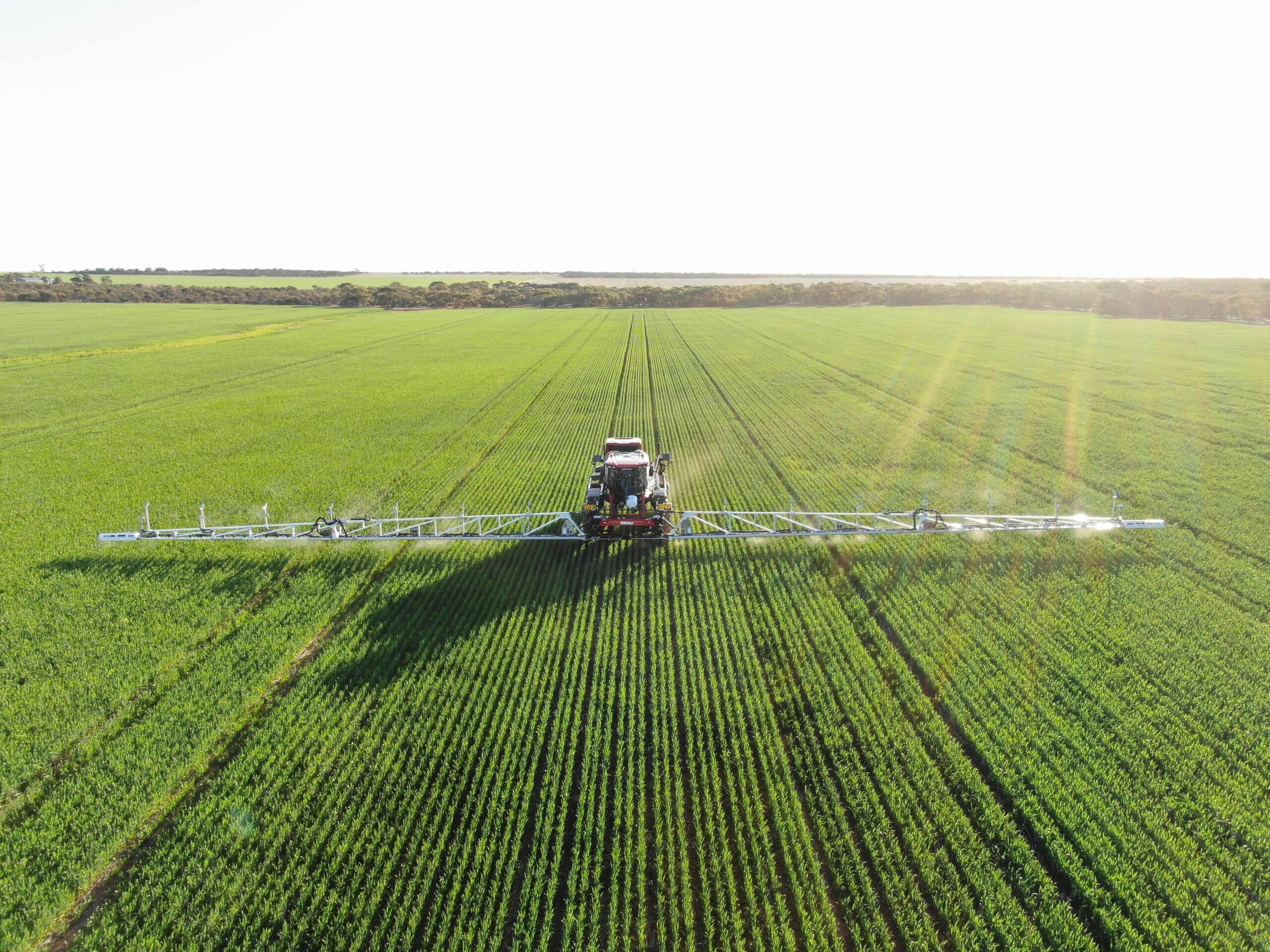
Photo caption : The Bilberry Intelligent Spot Spraying System for green-on-green applications fully integrates with Miller’s electronics and is available on the Miller truss booms up to 41.5 metres and the 48m Pommier boom. The integration also allows users to easily change from spot to blanket spraying.
An increasing return to swathing canola crops, as well as proven success with Bilberry green-on-green weed identification systems, is sending sales of Miller sprayers to some of their highest ever levels in Australia.
Miller has exclusively offered the swathing option with its self-propelled sprayers for a number of years and more and more growers are now appreciating the multi-use operation of the machines.
While use of swather adaptors with the Miller sprayers has been consistent, Peter Vella, National Miller Sales Manager with Australian distributor, McIntosh Distribution, said he believed there were several reasons behind the latest upturn.
“Increased production of GM (genetically modified) canola and the preference to swath some of those crops due to some issues with direct heading has certainly driven the demand for swather kits with the Miller sprayers recently,’’ Peter said.
“Of course, weed management remains one of the biggest focuses on farms and with growers wanting to reduce their numbers and control seedset in the spring, swath spraying continues to be very popular. It has been particularly strong in eastern states in recent seasons, with growers wanting to apply a knockdown as they are cutting.
“For all crop spraying and swathing operations, we also know it is about maximum efficiency on farms and so for many growers, if one machine can do both jobs, all the better.’’
As a result, he said numerous new owners of Miller Nitro sprayers had taken up the option for a swather kit, with MacDon windrowers the most popular fronts used with the machines.
The Bilberry Intelligent Spot Spraying System for green-on-green applications is currently the only commercially-available product in Australia, and which has a proven track record in-field, and the systems are working well with Miller sprayers extending from WA’s northern agricultural region through to southern areas, into South Australia, and most recently with strong interest from Victoria.
Amid the current high farm input cost environment, Peter said the technology was being targeted to help reduce chemical and operational costs.
Green-on-green trials with the Bilberry system have shown a minimum hit and kill rate of 80 per cent, as well as chemical savings of up to 90pc.
“Growers can cover more ground with a tank, and they can also go with more concentrated applications of particular selective herbicides to help better control difficult weeds,’’ Peter said.
Reduced in-crop spraying also can help delay the development of herbicide resistance, avoid potential yield penalties and minimise environmental impacts.
The technology uses an embedded camera network, artificial intelligence and deep learning software to identify weeds. The company’s weed recognition applications are constantly evolving to ensure specific weeds are precisely targeted with the appropriate herbicide in real time.
The system is controlled via an intuitive user interface through the screen mounted in the cab of sprayers, eliminating the need for in-depth computing knowledge to operate the system.
The Bilberry systems have been used to target broadleaf weeds in cereal crops and blue lupins in lupin crops, while the latest applications have added grasses and broadleaf weeds in lupins, as well as volunteer vetch in lentils. Applications for use in canola, chickpeas and sorghum are in large testing across Australian systems.
The technology fully integrates with Miller’s electronics and is available on the Miller truss booms up to 41.5 metres and the 48m Pommier boom. This full integration also allows users to easily change from spot to blanket spraying.
Growers pay a subscription to the Bilberry Intelligent Spot Spraying System either per hectare or on an annual basis with unlimited hectares, and this has been held at the same level as last year. It also incorporates all software updates and performance improvements.
Meanwhile, the high demand for Miller sprayers and options including the swather kits and Bilberry systems is putting stocks under considerable pressure and growers interested in machines for the upcoming season have been encouraged to indicate their intentions as soon as possible.
Peter said in addition to some of the latest Miller attractions, the manufacturer’s sprayers always have been universally lauded for their user-friendly operation and this is still the case today despite the rise in more sophisticated application technologies.
“With Miller, there are not too many things you have to do to go spraying and this means it is easy for multiple operators. Experienced and inexperienced operators find it simple and easy to understand.’’
